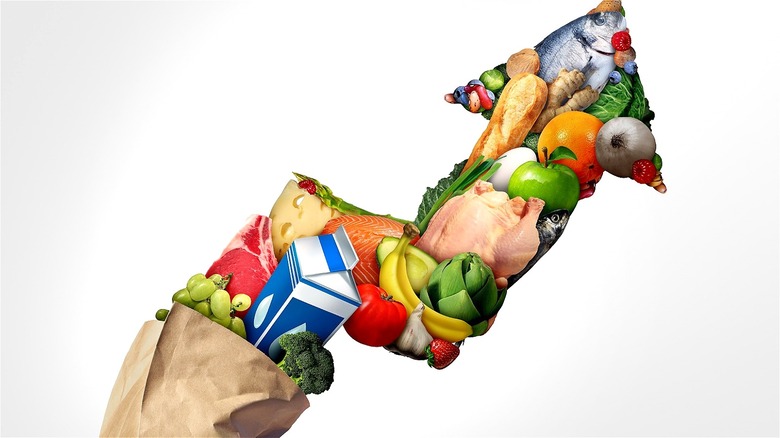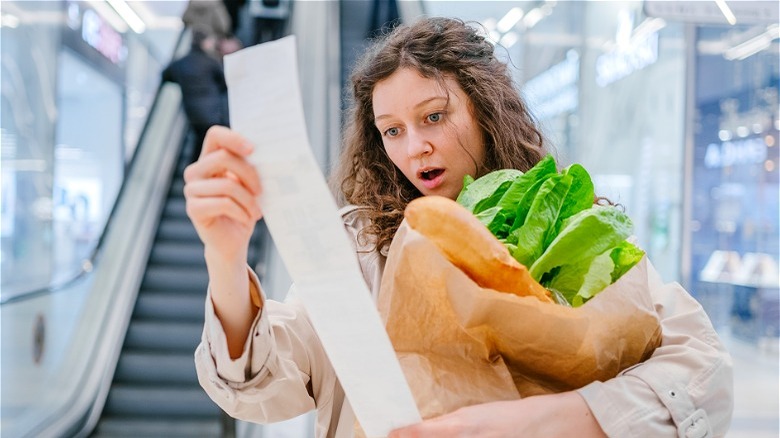How Inflation Has Changed America's Eating Habits
The inflation crisis that has dominated the United States since 2020 has not only changed Americans' shopping habits but rising food costs have also affected what consumers are deeming essential. Statista provides a visual of the daunting price shifts between January 2020 to August 2022: Even though the U.S. inflation rate peaked at 9.1% in June 2022, as of September 2022, the number remains elevated at 8.2% (per U.S. Bureau of Labor Statistics). According to the BLS, the overall cost of food still rose 8% in September leaving food prices high at a considerable increase of 11.2% over the last 12 months.
According to the USDA, 10.2% of households were considered food-insecure in 2021 and the World Food Programme claims the number of individuals suffering from hunger has exponentially expanded on a global level from 135 million to 345 million over the last three years.
In America, food prices away from home rose 8.5% but the cost of food at home rose 13% (via BLS) which has taken a toll on the way Americans who prefer home-cooking battle inflation in standard supermarkets. Consumers are exhibiting a strong preference for money-saving grocers over their costly upscale competitors (per Fox). New habits are forming and besides choosing cheaper grocery stores, there are more ways the everyday shopper is adjusting to elevated food prices.
Americans look for deals and leave the extras behind
NCSolutions reveals that 85% of Americans are concerned about rising prices. According to the BMO Real Financial Progress Index conducted in the spring of 2022, 42% of survey participants admitted to altering their grocery shopping behavior to cope with rising costs. These changes included but were not limited to the avoidance of name-brand products and shopping for essentials only.
When taking a look at the foods that are becoming more popular due to inflation, among low-income families, private-label brands in grocery stores have grown since May 2022 based primarily on cost-effectiveness (via Numerator). Numerator also indicates that 39.5% of high-income and 38.8% of middle-income families are purchasing privately labeled products to save money while also harboring the belief that the quality of these items has increased over the last year (per Forbes).
While private-label brands have grown, most consumers who make under $75,000 per year are still opting for essential foods only (via NPD). These families are eating 89% of their meals at home, choosing long-lasting pantry items and frozen meals. They have also significantly reduced their number of restaurant visits. While eating more meals at home can be seen as a positive change for some, these shifts in grocery behavior are taking a toll on consumer health based on the number of shelf-stable foods families are purchasing.
Eating healthy in America comes at a cost
When taking a look at the healthiest foods you can buy at the grocery store, many of these items have skyrocketed in price, thanks to inflation. Fruit and vegetable costs have increased by 10.4% in the last 12 months beginning September 2021 (per U.S. Bureau of Labor Statistics), forcing a lot of families to leave these healthy foods behind.
Connecticut resident, Kimberly Hart had to forgo her diet to reduce cholesterol and high blood pressure because buying healthier foods became too expensive for her family (per The Guardian). Director of the Center of Hunger-Free Communities at Drexel University, Mariana Chilton claims "highly processed foods are still the most affordable for people and they can stretch longer and they have a longer shelf life." Carol Ehrman told CNN that she buys bottled pasta sauce instead of making it fresh, stating she knows she "can make it much healthier" but the cost has put a strain on her healthy home cooking.
In October 2022, Finance Buzz conducted a survey of 1,000 Americans and found that 65% of participants "frequently" or "occasionally" felt that the cost of healthy food was preventing them from eating a well-rounded diet. Inflation has not only impacted Americans' pocketbooks; these financial constraints have made healthy eating more difficult for many consumers.


